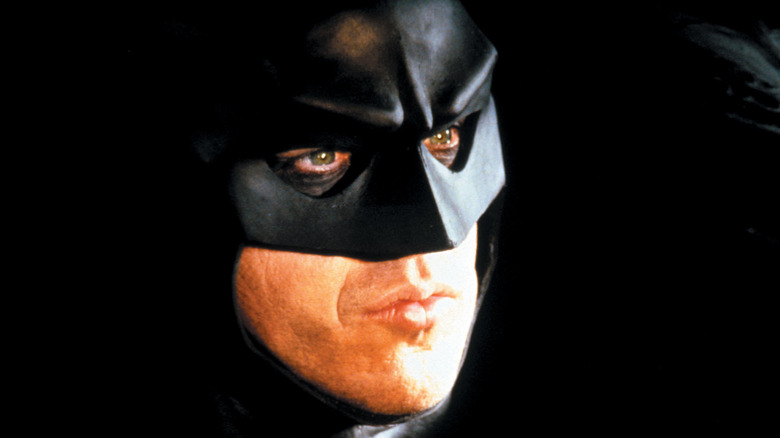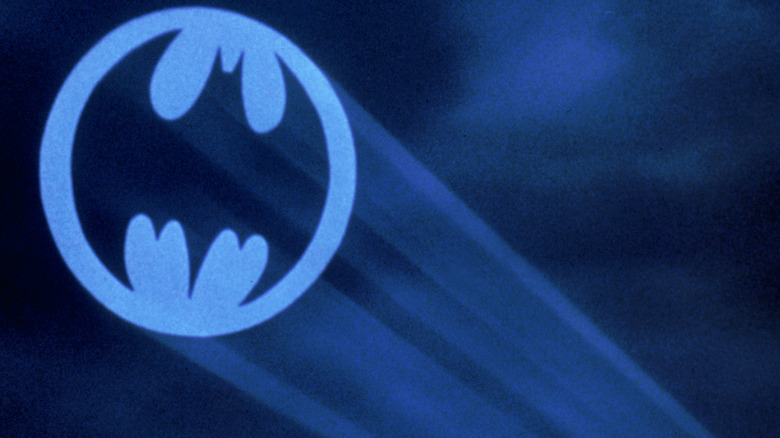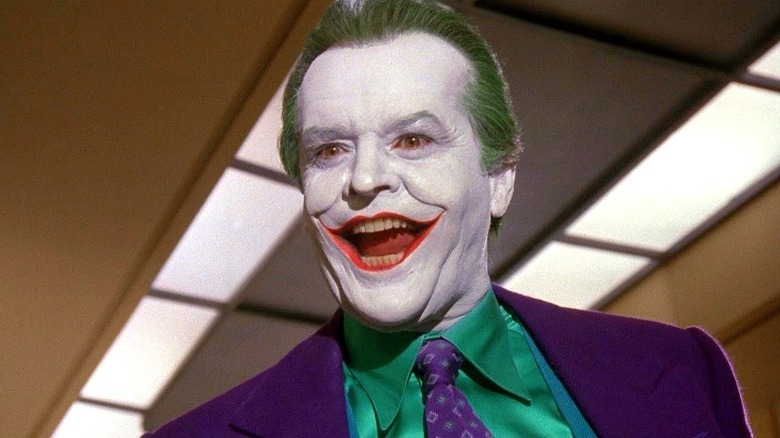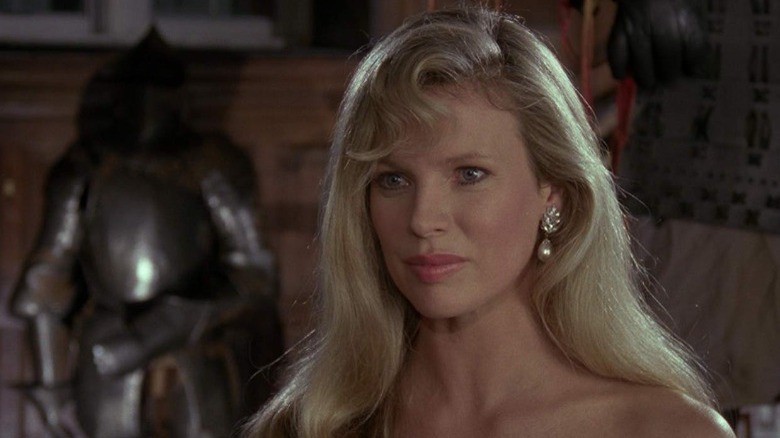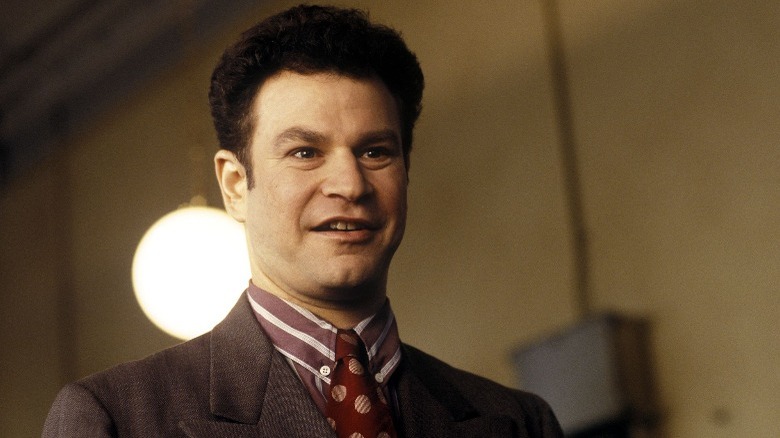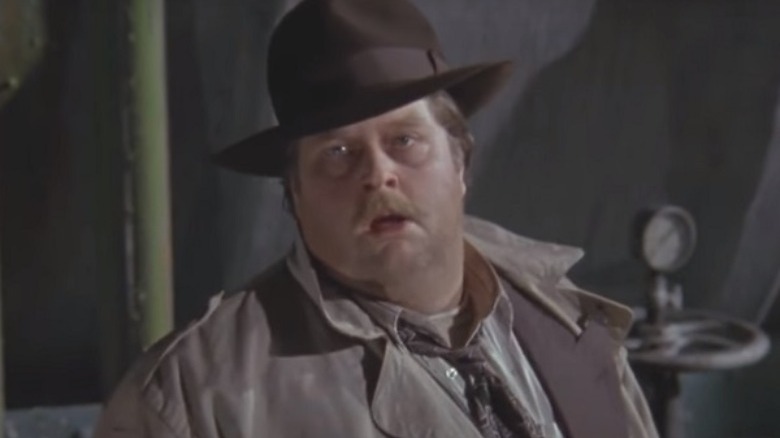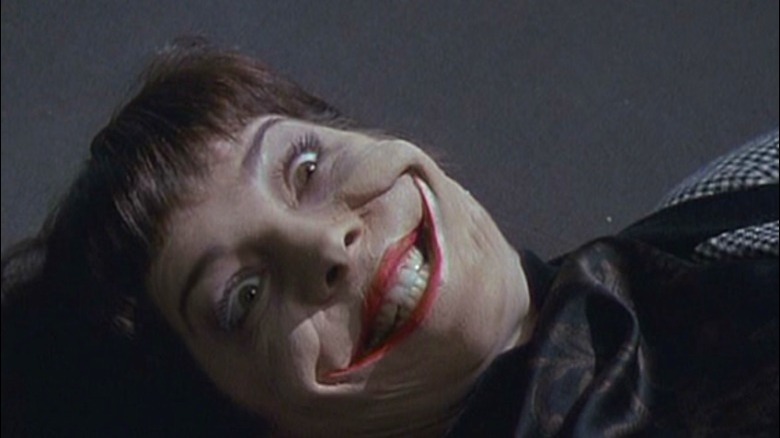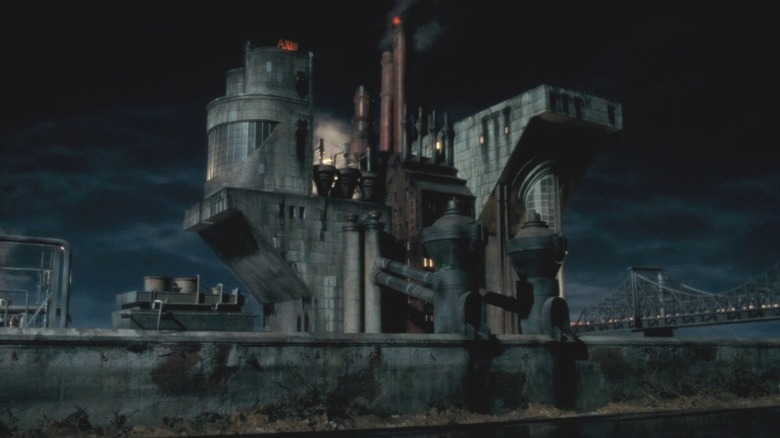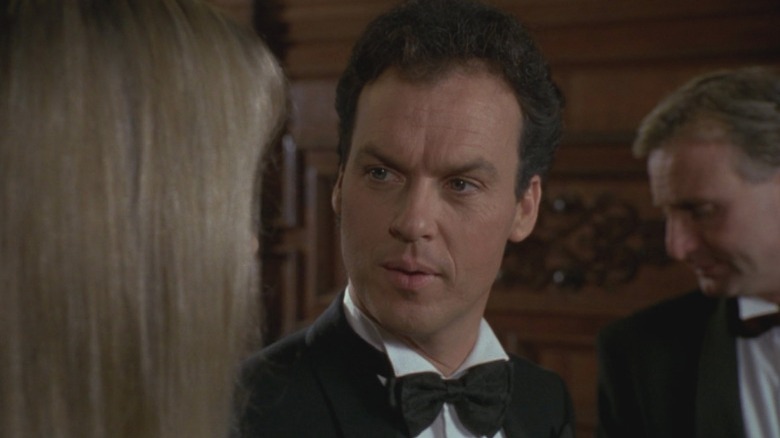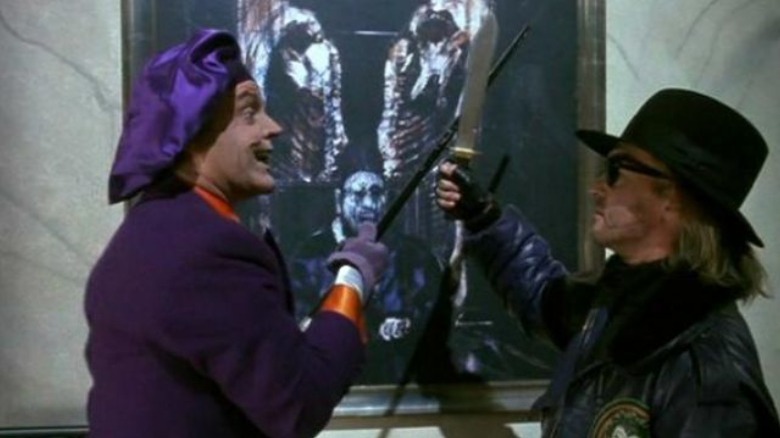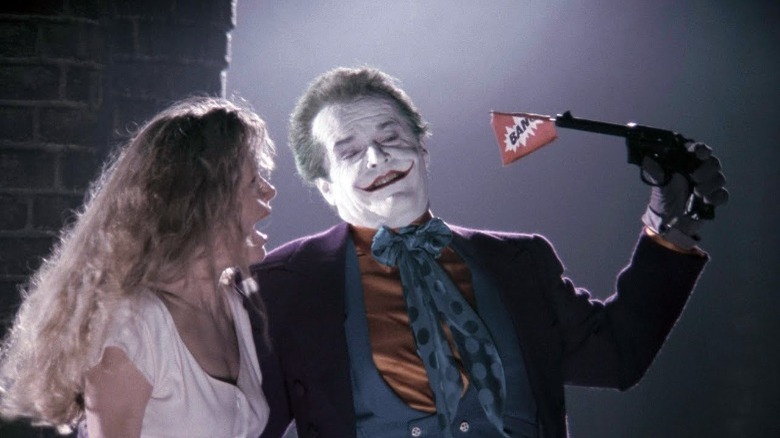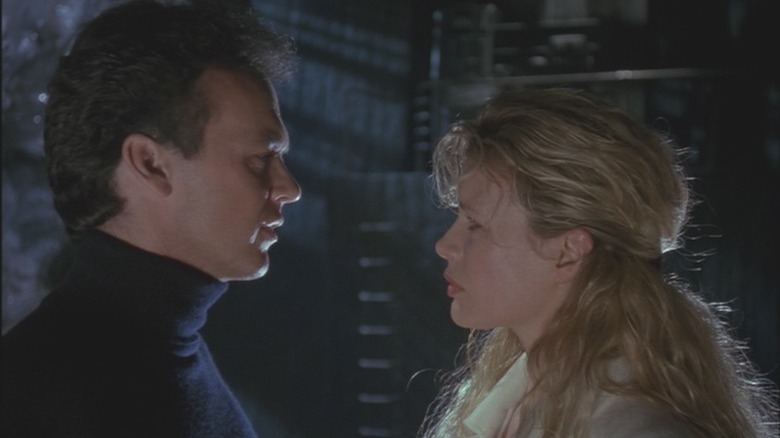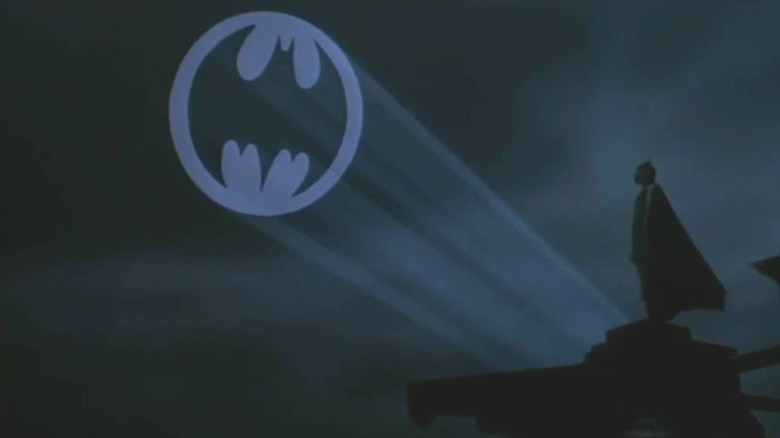The Ending Of Batman (1989) Explained
In a way, every new film iteration of Batman for the last few decades has been trying to recapture the magic of 1989's "Batman." Long before comic book movies were regularly part of mainstream cinema, and with only the campy and kid-friendly TV version of the character to compete with, Tim Burton's gothic and avant garde vision of Gotham City was instantly iconic. 1989 audiences were blown away, and "Batman" became one of the definitive takes on the character on its way to massive box office success. Virtually overnight, one of comic books' most iconic characters became a cinematic legend destined to be rebooted several times.
But, despite "Batman" carrying a legendary reputation, this isn't the most coherent film on the pure storytelling front. Like many Tim Burton films, it's more concerned with setting a mood and dazzling you with unique visuals than filling in all the dots on the plot, or even creating easy-to-follow character arcs. In the best way possible, "Batman" is sort of like an amusement park ride that takes you from scene to scene, a comic book come to life that leaves a lot unspoken between panels. Let's clear up as much confusion as we can: This is the ending of "Batman" explained.
He gave us a signal
"Batman" gets away with hazy storytelling because it assumes we're all passingly familiar with the crime fighting character. Bruce Wayne (Michael Keaton), orphaned billionaire, dresses up like a vigilante to fight crime. In the Gotham City of "Batman," apparently all of that crime is a result of the empire of a single mob boss named Carl Grissom (Jack Palance). After Jack Napier (Jack Nicholson) becomes the Joker, kills Grissom, and takes over his operation, the Joker ups the ante and causes mayhem all over town with various poisonings and assassinations.
During the climactic events of Gotham City's bicentennial parade, Batman kills the Joker and later all of the remaining syndicate goons are rounded up and caught, so crime has essentially been defeated in Gotham — at least to hear the mayor and district attorney tell it. Batman sends District Attorney Harvey Dent (Billy Dee Williams) a letter promising to return if he's needed. And he's even provided the iconic Bat-Signal to illuminate the night sky for the police to use — they didn't even have the internet back then, after all. Although "Batman" opens with the Caped Crusader chasing down two street thugs after a mugging, apparently petty crime is at a low enough level as the movie ends that Batman feels comfortable semi-retiring.
The Joker's diabolical plan
The legendary Jack Nicholson's unhinged version of the Joker is doubtlessly one of the best takes on the character on film. He's by turns menacing, hilarious, and is entirely unpredictable in every scene after falling in the chemical vat. But, the logistics and specifics of his grand plan don't really lend themselves to scrutiny. What exactly was Jack Napier trying to accomplish? After he's set up to die by Grissom and the corrupt Gotham Police Department's Lieutenant Eckhardt, it makes perfect sense to murder both of them in revenge and for the Joker to consolidate power by taking over the mob boss' criminal empire.
But from there, the Joker turns to a general homicidal lunacy that involves poisoning Gotham residents with cosmetics laced with chemicals and poison gas. He seems to have a vague point to prove, like many iterations of the character, that he and Batman aren't that different: Joker promises to give away $20 million in cash to prove that he's not the one "truly bringing terror to Gotham City."
But, the money turns out to be another smokescreen for mass-murder. It's never explained how much the Joker has to pay his army of goons to custom-produce purple and green parade floats, outfits, and novelties, or why they stay under his employment when Joker shows no loyalty. He murders his most loyal henchman Bob (Tracey Walter) out of nowhere just because he's frustrated with Batman.
Vicki Vale's sudden loss of ambition
At the end of the movie, Vicki Vale (Kim Basinger) has apparently given up on her pursuit of journalistic success. A renowned fashion photographer and war journalist, she's fresh off photographing the aftermath of a revolution on the island nation of Corto Maltese (a fictional nation in the DC mythology that's the setting "The Suicide Squad"). She goes to Gotham and takes a job at the Gotham Globe, based specifically on an interest in the rumors of a giant bat terrorizing criminals. She teams with Globe reporter Alexander Knox (Robert Wuhl) but quickly gets distracted by the enigmatic Bruce Wayne.
Her dogged pursuit of the truth leads her to be the first to piece together that Bruce and the Batman are one and the same, but the idea that she'll expose his secret is never even considered or discussed. Instead, after one dramatically vague conversation and a few near-death experiences at the hands of the Joker, Vicki walks away from Knox with just an affectionate peck on the cheek and no other explanation. Is she backing off the Batman story or giving up on her career entirely to focus on her new relationship? Either way, it's sort of a shame.
Does Knox ever get that Pulitzer?
Poor Alexander Knox. In the beginning of "Batman," he gets nothing but mockery from his peers for believing in the "six-foot bat" story, at least until the sympathetic Vicki Vale shows up. But, we never get to see the moment he's presumably vindicated and earns the respect of the newsroom for being right about Batman all along. Despite his initial instincts being correct, Knox is more or less behind the story the rest of the movie, reacting along with the rest of the public to the chaos that the Joker unleashes.
It seems like if Know just thinks about it, he has all of the ingredients to figure out Batman's secret identity. He's the one that looks up the news story about Bruce Wayne's parents getting murdered: As soon as he showed it to Vicki Vale, she rushed away suddenly and just days later quit working with him entirely. But journalists in comic book stories like "Batman" can't be too good at assembling obvious clues in general. Just like Superman and Clark Kent's remarkable resemblance over in Metropolis, the fact that Bruce Wayne is likely the only local citizen that could afford his own private Batmobile and Batwing plane is something that's always kind of staring the Gotham press corps in the face.
The openly corrupt Gotham PD
The rampant corruption of Gotham's police force is a plot point in every version of the Batman story, but it's kind of nuts how casually everyone acknowledges that Lieutenant Eckhardt is on the mob boss Grissom's payroll. Mere seconds after walking away from Knox, a member of the press, Eckhardt meets out in the open with Jack Napier to accept an envelope full of cash and loudly discuss the power structure of Grissom's operation. Obviously, things are pretty lax in Gotham before Batman starts to bash heads together, but a little subtlety goes a long way in keeping a criminal conspiracy under wraps.
But later, we learn that Commissioner Gordon (Pat Hingle) is himself entirely aware of Eckhardt's true loyalty; he states it outright when he arrives to take over the scene at Axis Chemicals. Perhaps Gordon doesn't have the evidence to turn Eckhardt over to prosecutors, but you have to believe that he has the power to do something other than just let a corrupt police lieutenant operate with brazen impunity. If Eckhardt can just run off with a team of police and operate as Grissom's private hit squad, there has to be a way to find a reason to take his badge away.
Smylex brand cosmetics
The Joker is able to paralyze Gotham City with fear by lacing several different cosmetic products with "Smylex" chemicals. In specific combinations (which only Batman is able to figure out), certain products like baby formula, deodorant, and hairspray will cause the user to start laughing hysterically and then fall down dead with a horrifying rictus grin. It's indeed terrifying, but it implies something unique for a sprawling metroplex like Gotham: Everyone buys exclusively locally made beauty products?
By taking control of the Gotham-based Axis Chemicals operation, the Joker manages to poison people all over the city and terrify the rest into avoiding many consumer goods altogether. But the majority of products on any given shelf, even in 1989, would be manufactured overseas or at least from several different states. It also beggars belief that the Smylex products couldn't immediately be traced to Axis, since it was known to have ties to Grissom's operation. A quick inspection of the supply chain would be a much more efficient solution to the panic than waiting for Batman to figure out which products not to use with one another.
The destruction of Axis Chemicals
As if to signify that he's done messing around, Batman's first act when he heads off to face the Joker on the night of the bicentennial parade is the complete destruction of Axis Chemicals. The Batmobile, operating remotely, essentially rides to destroy the plant on an unmanned kamikaze mission and also blows up in the process. Although it's an impressive action sequence and awe-inducing explosion, you can't help but wonder: Is this necessary?
With the plant full of Smylex poison, it seems hazardous for the local public health at a bare minimum: The plant is in the heart of a densely populated city and right next to a river. It just wasn't possible to tip off Gotham PD to actually raid the place and shut it down? It's not clear how the Joker and his goons got the run of the place so easily in the first place. Surely it would have been a crime scene after the shooting of Eckhardt and Napier's supposed death earlier in the movie?
Of all the disparate elements of "Batman," the destruction of the Axis plant is the scene most obviously just inserted because it would look cool, as opposed to making sense in the story.
Bruce Wayne, anonymous billionaire
A lot of the plot of "Batman" depends on an absurd amount of anonymity for the richest man in Gotham City. Bruce Wayne is apparently so unknown that Vicki Vale doesn't know what he looks like, leading to a bit of confusion when they meet at a fundraiser that he's hosting. Later, she tries to see what the Gotham Globe has on file about Bruce, but finds an all-but-empty folder. You'd think a man important enough to have a seat reserved with his name at the event where Harvey Dent is announced as District Attorney would have come up in the local paper many times before.
It's also hard to believe that the murder of his parents isn't common knowledge, as opposed to such an obscure fact that Vicki and Knox have to scroll through microfiche to dig it up. Like the Vanderbilts or Rockefellers, the wealth of the Waynes would make them known figures in a 200-year-old city like Gotham, and their shocking murder would be a landmark event, especially among local journalists.
The painting that Joker spares
In a quick gag during the musical destruction at the art museum, the Joker stops Bob from defacing one particular work of art, telling him "I like this one." The grotesque, clown-looking portrait surrounded by two halves of a split cow might seem like something the art department create to match the Joker's murderous sensibility, but the painting is actually Francis Bacon's "Figure With Meat." A nihilistic parody of another painter's portrait of Pope Innocent X, "Figure With Meat" transforms the normally regal papal visage into that of a tortured and depraved butcher, flanked by hideous raw meat, according to the Art Institute of Chicago, where it resides in reality.
The Joker has recently assassinated his crime lord boss and seeks to tear all of Gotham apart, it's no wonder that such an absurdist take on authority and humanity appeals to him. It's exactly the type of work he imagines creating in photograph with Vicki's help, although she doesn't seem particularly taken by his vision.
The showdown in the belfry
In some moments the Joker seems like he has a complicated master plan, in others he's clearly winging it. After Batman foils his scheme with the poison parade balloons, he shoots down the Batwing glider with one well-placed shot, then kidnaps Vicki Vale, who's once again unfortunately right in the middle of the action. Joker radios his goons to pick him up in 10 minutes from the top of Gotham Cathedral, an impulse that appears to strike him in the moment.
But, when Batman arrives in the belfry in pursuit, after climbing up hundreds of stairs, he has to fight two of Joker's toughest goons that apparently were waiting up there the entire time. Maybe the Joker planned all along to lure Batman up to the bell tower? He was sitting on a killer line about having "a bat in my belfry," after all.
He also pre-planned several visual gags that don't really help him in the fight: a gun that just has a "bang" sign, chattering teeth to drop in case he gets punched in the mouth, and a fake hand just in case someone needs help off of a ledge. You have to admire his commitment to schtick, even if it's impossible to follow his logic.
Are we gonna try to love each other?
Bruce and Vicki's love story is a prominent element of "Batman," although most of the time Alfred (Michael Gough) seems more invested in it than either of the two of them. When Alfred lets Vicki into the Batcave, the potential lovers skip immediately past any kind of "so I figured out you're Batman" conversation and immediately start dramatically debating whether Batman can have a relationship, while turning dramatically away from one another. Bruce wishes the world were different, but he also can't rest while the Joker is still out there.
After the Joker falls to his death, Bruce and Vicki are apparently game to give this crazy little thing called love a shot, although their first limo ride will have to wait for Bruce to finish dramatically staring at the Bat-Signal in the sky. It's only a mild spoiler for "Batman Returns" to reveal that they ultimately can't make it work, as the need for Batman gets in the way and Vicki doesn't appear in the sequel.
Vigilantism and love might not ultimately be compatible, but it would be more compelling if the couple had chemistry worth rooting for in the first place. When Vicki says "I've loved you since we met," it's genuinely surprising.
A gargoyle to watch over the city
The final shot of "Batman" is the iconic shot of him far above the city, ever watchful. It connects him aesthetically and thematically with the symbolism of the gargoyle, the stone sculptures often placed atop gothic buildings to ward off evil spirits (via Ancient Origins). Dating back to the middle ages, many myths surround gargoyles: In some versions, they're humans that willingly became monsters, parallel to Bruce Wayne's decision to become a terrifying figure.
Batman, of course, also got an assist from a literal gargoyle in the climactic showdown of "Batman," using a grappling hook to attach one of Gotham Cathedral's stone decorations to the Joker's legs, finally dragging him off his helicopter and to his death below. Hopefully the Cathedral can replace it: In addition to their symbolic duties, Ancient Origins says gargoyles also serve functional purposes like directing rainwater, and Gotham City seems like it's constantly overcast. Good thing Batman is "friends" with a billionaire.
